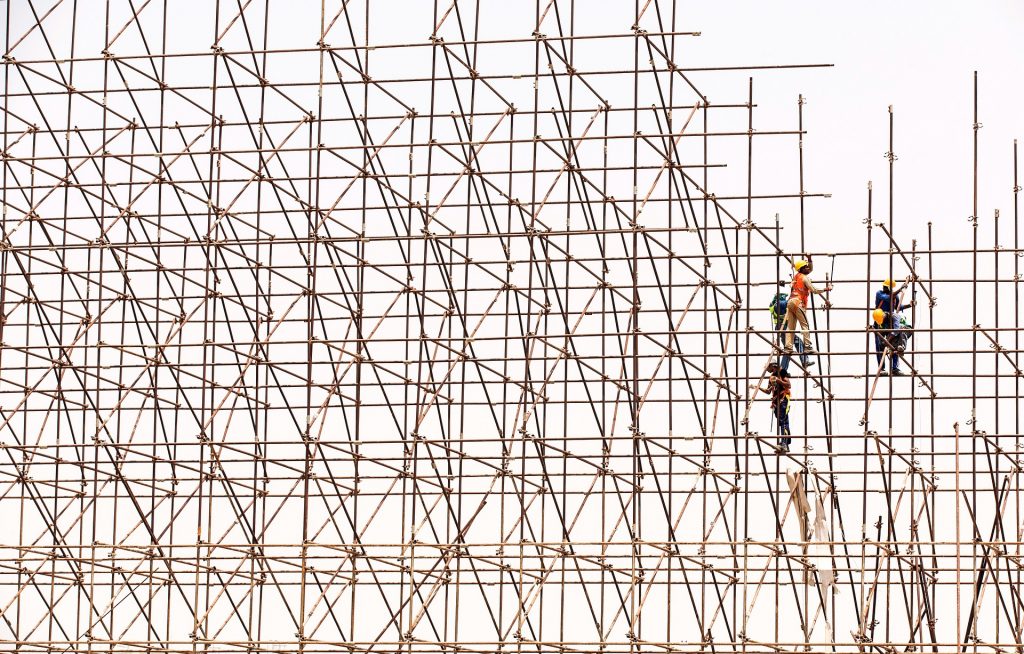What is Metal Scaffolding?
From as early as the beginning of human civilisation, scaffolding was widely used in various construction sites all around the globe. Even the ancient Egyptian pyramids were said to have been constructed with the use of these devices. However, in that era, they would have been made from timber instead of a steel or mobile aluminium scaffold.
Until around 1922, contractors still made use of wooden scaffolding to erect buildings far and wide. However, not long after, they began to use metal tubes made of steel which replaced the original wooden poles. In today’s society, metal scaffolding is used far and wide since it is not only lightweight but also has tremendous strength.
The main benefit of using tube scaffolding is that it’s very easy and quick to assemble and it doesn’t require bolts and nuts. However, these contraptions are made from either aluminium or steel. Unlike wood, steel has greater durability and strength and a decent amount of elasticity that prevents cracks.
Steel can also support relatively heavy loads and allows workers to effectively and safely transport supplies and equipment. In the case of tall structures, steel is necessary since the overall weight of the scaffolding requires a decent amount of strength for support. As such, only steel is capable of doing this.
If for some reason, the conditions are less demanding, then regular aluminium scaffolding can be used. By using metal scaffolding, workers will be able to have even better access to very remote locations. this can be done with the incorporation of diagonal bracings.
The following are the three basic elements found in metal scaffolding:
- Standards;
- Ledgers;
- Transoms.
If you didn’t already know, standards are a set of vertical tubes that usually run through the entire structure. They mainly keep the structure in its upright position and they transfer weight off of the structure onto the ground. This is done via the square base plate and it spreads the load evenly.
The ledgers on the other hand are horizontal tubes that connect the standards. They also ensure that the structure stays in places and they also provide stability. The transoms in the setup are simply tubes that are placed horizontally across the ledges to provide added support.
Metal Scaffolding Applications
Metal scaffolding is widely used in the construction industry. However, it is also used for maintenance and repairs and it provides a safe way to get workers high up. In essence, it creates a way for them to remotely have access to hard to reach places.
The following are the different types of scaffolding:
- Supported scaffolding is usually the most common and they’re built from the ground and get higher. These are usually seen on construction sites and they are not only easy to use but are safe and convenient. Unlike others, they are the most cost-effective type that you’ll ever find. However, extra support is added if they are expected to reach very heavy loads and high locations.
- The suspended variant is typically suspended from the roof. If for some reason you’re working in a situation where the floor isn’t ideal, you’ll be able to work as normal since the scaffolding will be suspended from the roof.
- Rolling scaffolding is similar in the way they’re made to the support scaffolding. However, the only difference is that there are castor wheels that provide some mobility. This is an ideal option if you’re working across long buildings. The wheels can be easily locked and when materials or workers are on the scaffolding; this adds even more safety and support for everyone around.
Metal Scaffolding Materials
The following are common scaffolding materials that are used:
- Tubes;
- Boards or decking;
- Couplers.
The tubes used are constructed from aluminium or steel. However, the steel used is usually hot-rolled steel. In instances where live overhead cables possess a risk, filament-wounded tubes that contain glass fibre can be used. These glass fibres can be either polyester or nylon.





